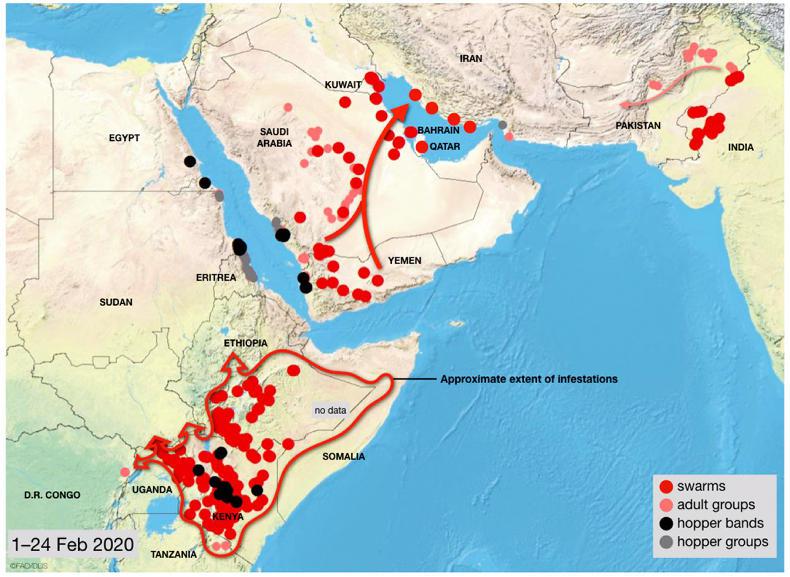Seven countries in East Africa are suffering from the worst locust infestation in 75 years. Irish charity, Concern Worldwide is getting ready to assist farmers whose crops and pasturelands have been destroyed by plagues of locusts.
Andrea Solomon, Concern’s acting country director in Somalia said: “As the swarms move through communities they eat everything green including leaves, crops and pasturelands. Even the stalks from last year’s crop which farmers had stored to feed their animals during the dry season have been infested by the locusts.”
The locusts arrived shortly before the harvest of sorghum, cowpeas, groundnuts and maize. They have also eaten seeds that were reserved for the next cropping season.
A 1sq kilometre sized swarm can contain up to 150 million locusts, and can devour enough crops to feed 35,000 people for a day.

These communities face a precarious future, warned Solomon.
“The rains are due to arrive later in March and, if they perform well, people can hope for a good harvest, but good rains will also provide ideal conditions for the locusts to breed and thrive. If, on the other hand, the rains are poor, affected farmers can expect a poor harvest and another set of problems.”
The locusts were blown from Yemen into east Africa in December and swarmed southwards through Somalia, laying their eggs as they moved. New locusts are already hatching and starting to swarm in coastal areas, with more swarms predicted for March and April.
“If farmers have to move their livestock further away to graze due to the destruction caused by locusts, it will mean their children will have little access to milk, which from past experience can lead to increases in malnutrition rates and negative coping strategies such as children dropping out of school,” said Solomon.
Many countries in the Horn of Africa are experiencing the worst #DesertLocust outbreak in decades. @FAO Keith Cressman explains how this is a result of our changing climate.
— FAO (@FAO) February 17, 2020
???Listen to our podcast to learn more??https://t.co/pKAnXLgc6P #climatechange #locusts pic.twitter.com/cMkdrUggaz
The swarms are expected to result in harvest losses of 50% to 75% in some areas of Kenya, and losses of up to 65% of pastureland.
The UN’s Food and Agriculture Organisation (FAO) has warned that the number of locusts could be 500 times greater by June unless effective control measures are taken. The FAO and Kenyan government are working to spray infestations to control them.
With wind directions expected to change in March, the FAO is forecasting that the swarms will move northe towards Ethiopia, Somalia, South Sudan and Sudan, leaving the food supplies of another 20 million people in those areas at risk.
To donate to Concern Worldwide, click here.






 This is a subscriber-only article
This is a subscriber-only article











SHARING OPTIONS: